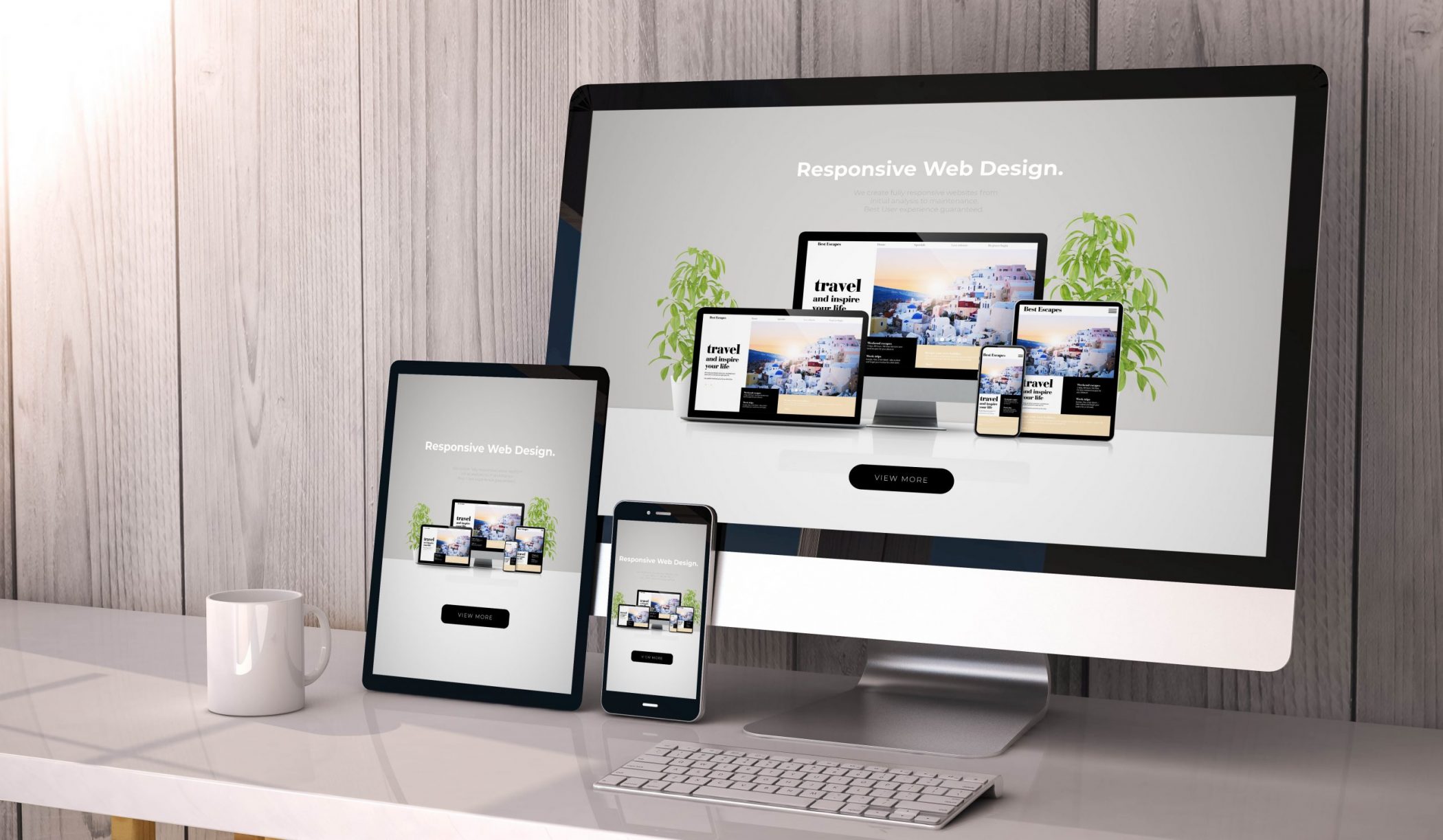The Relevance of User Experience in Reliable Web Design Approaches
User experience (UX) acts as a cornerstone in effective web design approaches. It shapes just how individuals connect with a website, affecting their contentment and possibility of returning. A properly designed UX can boost interaction through user-friendly navigating and responsive layouts. Ignoring these facets may lead to disappointment and increased bounce rates. Recognizing the intricacies of UX is essential for developers aiming to create compelling electronic experiences that resonate with varied target markets. What aspects truly drive effective user involvement?
Recognizing User Experience and Its Effect On Style
Although user experience (UX) is often perceived as a mere element of web design, it basically forms how individuals engage with a site. UX encompasses all elements of the user's communication, consisting of use, ease of access, and total fulfillment. A positive UX promotes engagement, encouraging individuals to explore the site and return in the future. On the other hand, an unfavorable experience can lead to aggravation, resulting in high bounce prices and shed possibilities for conversion.
Design aspects like navigating, material, and format organization play crucial functions fit this experience. Reliable UX design expects user requirements and preferences, ensuring that details is aesthetically appealing and easily available. Additionally, understanding user habits with analytics can provide useful understandings, educating layout choices that enhance usability. Eventually, an extensive understanding of UX enables developers to produce internet sites that not just bring in customers yet additionally advertise meaningful communications that align with business goals and user assumptions.
Secret Principles of Effective User Experience
Efficient user experience depends upon a number of key concepts that boost site performance and involvement. User-friendly navigation design, receptive layout basics, and the importance of aesthetic hierarchy are crucial components that add to a smooth interaction between customers and internet content. Understanding these principles allows developers to develop more available and user-friendly digital environments.
User-friendly Navigation Layout
Instinctive navigating design offers as a vital portal to their total experience when customers run into an internet site. Efficient navigating enables individuals to easily find the information they seek, enhancing their interaction with the website. Secret concepts include clear labeling, logical organization, and constant positioning of navigation elements. Tags must be uncomplicated, enabling users to forecast the content they will locate. A well-structured power structure helps individuals recognize the relationship between different sections, guiding them with the internet site perfectly. Additionally, responsive menus and easily obtainable web links add to a liquid experience throughout devices. By prioritizing user-friendly navigating, developers can considerably minimize user irritation and boost interaction, ultimately fostering a positive assumption of the web site and its material.
Receptive Design Basics
A well-structured navigating system normally brings about the demand for a receptive layout, which is crucial in today's diverse electronic landscape. A receptive design assurances that websites feature effortlessly across different devices, including tablet computers, mobile phones, and desktops. This adaptability improves user experience by enabling content to be conveniently available and aesthetically meaningful, no matter screen size. Secret principles of receptive layout include liquid grids, flexible images, and media inquiries, which help with suitable watching. In addition, prioritizing touch-friendly aspects enhances communication on mobile phones. By applying a responsive format, designers can accommodate customers' needs, lessen bounce prices, and boost engagement. Inevitably, a well-executed responsive layout cultivates a positive user experience, motivating site visitors to discover the website better.
Visual Hierarchy Significance
Aesthetic pecking order plays an important function in directing customers through a site, ensuring that important information records their interest. By strategically using dimension, color, spacing, and comparison, developers can create a clear pathway for customers to adhere to. Larger elements commonly attract the eye, showing their relevance, while contrasting shades can highlight contact us to activity. In addition, consistent positioning and grouping of associated material improve understanding, making navigating intuitive. Reliable use visual pecking order not only improves usability however likewise supports the total aesthetic of the site, promoting a favorable user experience. When individuals can conveniently recognize the most crucial details, they are more likely to involve with the web content, leading to boosted fulfillment and communication with the site.
The Duty of Usability in Web Design
Use plays a necessary duty in web design, specifically through navigation simpleness and adherence to ease of access requirements. Effective navigation boosts user satisfaction by enabling visitors to find information promptly and intuitively. Meeting ease of access criteria assures that all individuals, regardless of their capabilities, can effectively engage with the site.
Navigation Simpleness
Simplicity in navigation stands as a keystone of reliable web design, greatly influencing user experience. A streamlined navigating system permits individuals to find information promptly and intuitively, lowering stress and improving contentment. Clear labeling and rational structure are important elements, leading customers effortlessly with the website. Redundant links or excessively complex menus can disorient individuals, bring about boosted bounce prices. In addition, mobile responsiveness has to be thought about, making sure navigation remains uncomplicated across devices. Lessening and prioritizing important web pages clutter additionally supports user interaction. Reliable navigation not only promotes a favorable experience yet additionally urges individuals to check out the website better, inevitably causing higher conversion rates. Hereof, navigation simpleness offers as an important factor in the overall efficiency of web design strategies.
Accessibility Standards
User involvement is significantly improved when websites abide by ease of access criteria, making certain that all individuals, no matter of their capabilities, can browse and connect effectively. Compliance with these standards not just broadens the target market but also enhances overall user satisfaction. Easily accessible style integrates attributes such as text choices for photos, key-board navigation, and sufficient color comparison, which help with usage by people with impairments. On top of that, carrying out these standards can positively impact seo (SEO) by boosting site redirected here structure and clearness. As web design progresses, prioritizing access ends up being essential in cultivating a comprehensive digital atmosphere. By welcoming these criteria, developers contribute to a much more equitable net, ultimately driving user commitment and engagement.
Significance of Responsive Layout for User Engagement
As consumers significantly accessibility sites via a selection of devices, the importance of receptive design comes to be extremely important for involving customers successfully. Responsive style warranties that a site adjusts flawlessly to various screen sizes, offering an optimal viewing experience despite the gadget made use of. This flexibility improves user engagement by facilitating less complicated navigation and interaction with web content.
When users experience an internet site that is responsive, they are more probable to stay longer, discover better, and return in the future. A well-designed receptive layout reduces the stress frequently connected with scrolling and zooming on smaller sized screens, thereby reducing bounce prices. In addition, receptive style can favorably impact internet search engine positions, as online search engine focus on mobile-friendly sites. In today's electronic landscape, where mobile use proceeds to increase, implementing responsive layout is not simply valuable, but necessary for keeping user engagement and ensuring a favorable experience throughout all gadgets.
Enhancing Load Times for Better User Contentment

To improve lots times, web designers ought to prioritize maximizing images, leveraging browser caching, and lessening HTTP demands. Furthermore, utilizing Material Delivery Networks (CDNs) can speed up content distribution by distributing it throughout numerous geographic locations. Enhancing code, such as compressing CSS and JavaScript files, better contributes to faster loading speeds.
Ultimately, a commitment to enhancing load times not just improves user satisfaction however likewise enhances brand name loyalty and boosts the possibility of repeat visits. A swift, smooth experience is vital for maintaining customers and promoting positive communications.
The Influence of Visual Hierarchy on User Communication
Aesthetic power structure acts as an important aspect in guiding user communication on a site. By organizing material in a means that prioritizes details aesthetically, designers can influence exactly how users involve and navigate with a site. This hierarchy is developed through various style methods, including size, spacing, shade, and comparison. For example, bigger font styles or strong colors attract attention to essential aspects, such as phone call to activity or headlines, while suppressed colors and smaller sized font styles can indicate subordinate information.
Effective aesthetic power structure aids users promptly identify what is crucial, reducing cognitive load and enhancing usability. It enables instinctive navigation, making it less complicated for individuals to find what they require without aggravation. As individuals connect with a website, a well-structured aesthetic hierarchy cultivates an extra gratifying experience, eventually leading to higher engagement and conversion prices. Developers need to focus on these concepts to develop an user-centered and reliable web setting.
Determining User Experience: Tools and Techniques

Often Asked Questions
Just How Can I Improve My Website's User Experience on a Spending plan?
To boost an why not try these out internet site's user experience on a budget, one can optimize web page load speed, streamline navigation, carry out responsive design, improve material clearness, and collect user comments for continual improvements, guaranteeing an enjoyable site visitor experience.
What Are Common User Experience Blunders to Prevent in Web Design?
Common user experience mistakes in web design include cluttered layouts, inadequate navigating, slow packing times, absence of mobile responsiveness, neglecting access, irregular branding, and failing to prioritize user comments - agency for web design. Each can greatly prevent overall website performance
How Usually Should I Update My Internet Site for Better User Experience?
Sites ought to be upgraded frequently, ideally every couple of months, to keep suitable user experience. Constant updates Source assist address functionality issues, revitalize content, and adjust to transforming user requirements, making certain the website stays interesting and relevant.

Can User Experience Influence SEO Rankings on My Internet site?
User experience can greatly influence SEO positions, as online search engine prioritize websites that supply smooth navigation, quick loading times, and interesting content. A positive user experience can lead to lower bounce rates and greater search exposure.
What Duty Does Ease Of Access Play in User Experience Design?
Availability plays a necessary function in user experience design by ensuring that all people, regardless of abilities, can connect and browse with a site successfully. This inclusivity boosts general complete satisfaction and interaction among diverse users.
User experience (UX) is often viewed as a mere facet of web style, it fundamentally forms exactly how customers interact with a website. User interaction is significantly boosted when sites adhere to access standards, ensuring that all individuals, no matter of their abilities, can navigate and connect successfully. Gauging user experience (UX) is vital for recognizing exactly how properly a website meets the requirements of its users. Furthermore, usability screening, where actual customers browse the site while viewers note difficulties, provides direct feedback on user experience. Usual user experience errors in web design consist of chaotic layouts, bad navigation, sluggish packing times, lack of mobile responsiveness, disregarding access, inconsistent branding, and stopping working to focus on user feedback.